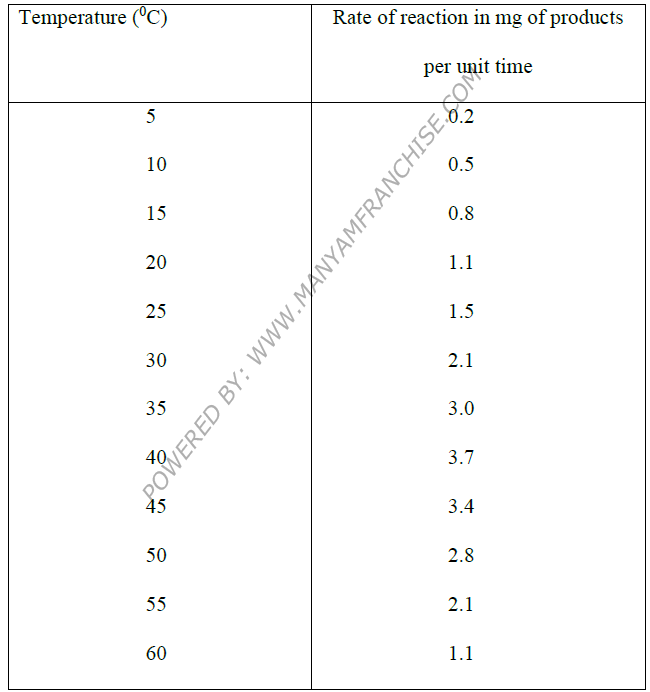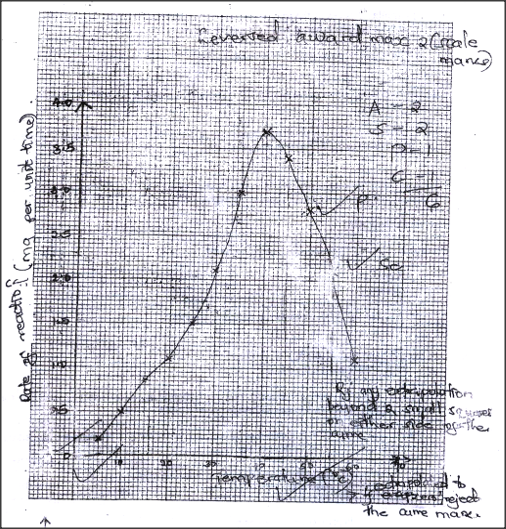Mastering KCSE Biology with Comprehensive Topical Questions and Answers
K.C.S.E Biology Q & A - MODEL 2009PP2QN06
An experiment was carried out to investigate the effect of temperature on the rate of reaction catalyzed by an enzyme. The results are shown in the table below
(a)On t he grid provided draw a graph of rate of reaction against temperature
(b) When was the rate of reaction 2.6 mg of product per unit time? (c) Account for the shape of the graph between (i) 5 C and 40 C (ii) 45 C and 60C (d) Other than temperature name two ways in which the rate of reaction between 5C and 40C could be increased (e) (i) Name one digestive enzymes in the human body which works best in acidic condition (ii) How is the acidic condition for the enzyme named in (e) (i) above attained? (f) The acidic conditions in (e) (ii) above is later neutralized (i) Where does the neutralization take place? (ii) Name the substance responsible for neutralization
answers
(b) 33C and 51.5 ( ± 0.5C)
32.5 - 33.5 and 51.0 – 52.0 (c)(i) As temperature is increased rate of reaction is increased/ more products are formed (per unit time) because enzymes become more active (ii) As temperatures increases rate of reaction decreases less products are formed (unit per time) because enzymes become denatured by high temperatures. (b) Increase in enzyme concentration and substance concentration Increasing number of enzyme (e) (i) Pepsin, remain/ chymosin (ii) Wall of stomach/ gastric gland/ oxyntic/ pariental/ cell produced Hydrochloric (f) (i) Duodenum (ii) Bile juice/ SANS any correct salt e.g. NaHCO3
0 Comments
Leave a Reply. |
Archives
December 2024
Categories
All
TOPICSFORM 1
Form 2
Form 3
Form 4
|
We Would Love to Have You Visit Soon! |
Hours24 HR Service
|
Telephone0728 450425
|
|
8-4-4 materialsLevels
Subjects
|
cbc materialsE.C.D.E
Lower Primary
Upper Primary
Lower Secondary
Upper Secondary
|
teacher support
Other Blogs
|









 RSS Feed
RSS Feed